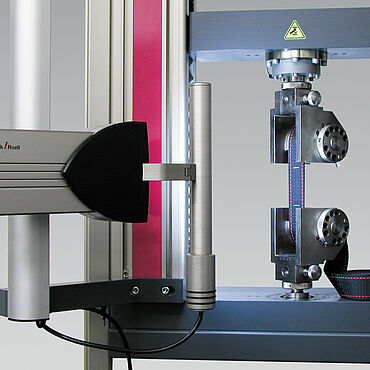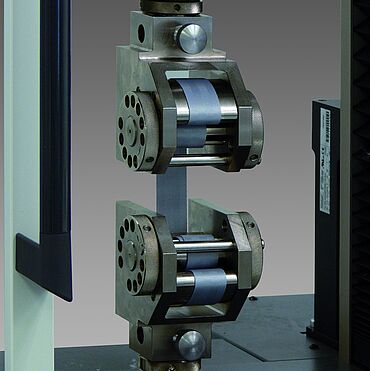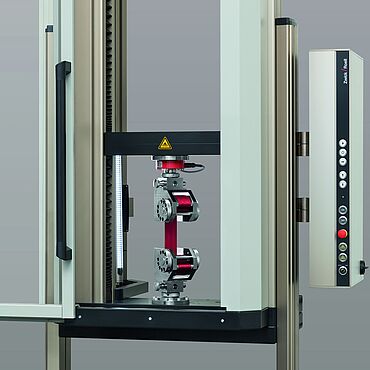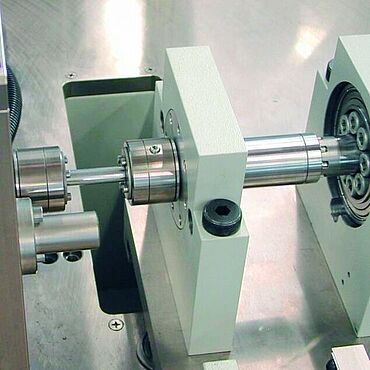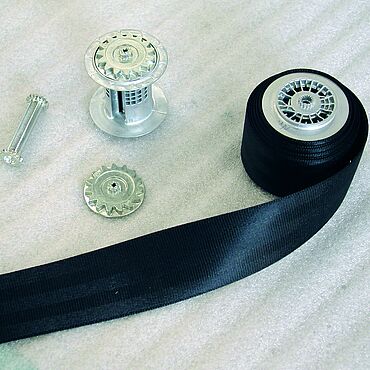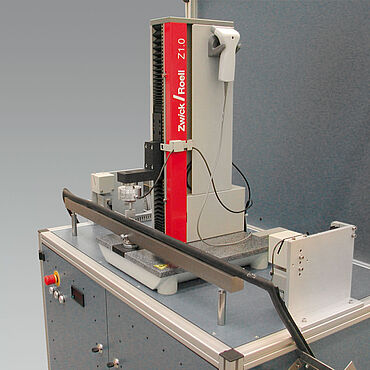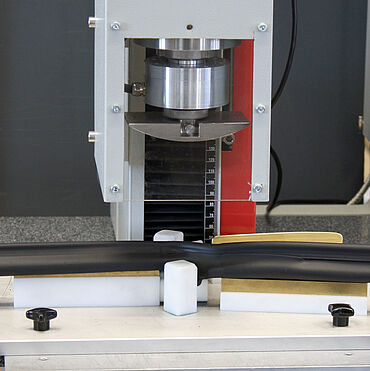Testing of safety components
The vehicle interior is not only for passengers; it fulfills functions that are essential for survival in case of emergency. It protects the passengers through its outer stiffness and the formability of the interior paneling. It provides space for active and passive safety devices, as well as for the many support systems that enable you to drive, inform and orient yourself quickly and safely. Tests for all these components ensure that the passengers have the highest level of safety and comfort, even during long-term conditions and under temperatures that occur in daily operations—from arctic, sub-zero temperatures to desert temperatures.
Testing of safety belts
The seat belt has long been the most important passenger restraint system. It must comply with multiple stringent requirements. Its test is defined in detail in the regulation UN/ECE-R16. In addition to various preconditions for the belt (placement, humidity, temperature, light, drive, etc.) the test must be performed on a testing machine according to very strict specifications. In addition to the maximum force at break, values such as the transverse strain under load are calculated. ZwickRoell testing systems are also used to determine the strength of the produced seat belt system (with and without the seat belt lock).
Testing of airbag fabrics
Another important piece of safety equipment is airbags, which are now installed in many positions in the passenger area. In addition to testing the textiles used to make airbags, their seams and adhesive bonds are also tested in a tensile test. Other testing requirements affect sensor technology and switching elements as well as the predetermined breaking point of the cover panels.
Testing of airbag connectors
Airbags are one of the most important safety components in an automobile. The demands for a perfect deployment in case of an emergency are correspondingly high. Today, eight to twelve airbags are installed in a vehicle, and it must be ensured that the connectors latch safely and that the necessary electrical contact is made. During the component development phase, Delphi Connection Systems Deutschland GmbH, a leading global manufacturer of connector systems, performs tests to verify the mechanical and electrical properties of the connectors.
Airbag connectors make a characteristic noise (audible feedback) when they are latched. However, this is not sufficient to ensure that electrical contact has also been made. For this, companies rely on synchronized mechanical, electrical, and optical testing. The connection is tested using a ZwickRoell AllroundLine testing machine. The AllroundLine series was developed for demanding testing situations, a key feature being its flexible expansion options. When connecting, a PCIe card installed in testControl II performs time-synchronous measurement of the current, while generating a graphic indicating the presence or absence of electrical contact.
In parallel, the moment of latching is recorded optically for safety reasons. In addition, the essential components of the connector, such as springs and clamps, are filmed from two different angles. ZwickRoell's Multi-Capture function was developed for applications such as this and it delivers detailed, synchronized videos from two different angles. If necessary, as many as four video cameras can be connected. All incoming data is processed by the testControl II measurement and control technology. It provides quick, measured value acquisition for monitoring switch contacts and maximum modularity through a large number of free slots.
Testing of sealing sensors
Window and door seal testing system
This testing system tests door and window seals with an integrated anti-pinch system. The anti-pinch system switches off window or sunroof motors if a defined force is applied to the seal (in case a passenger's fingers or head is pinched). The system determines the force at which the electrical signal activates the safety system. The electrical signal is measured and displayed in real time in the test sequence. The system also integrates a barcode reader for specimen identification and a horizontal positioning unit for multiple loading.
